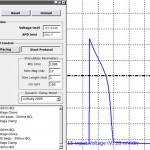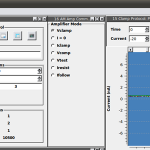Sudden cardiac death, primarily caused by ventricular arrhythmias, is a major public health problem – it is one of the leading causes of mortality, resulting in more than 350,000 annual deaths in the United States alone. Our group’s efforts are focused on improving our understanding of, and therefore therapies for, cardiac arrhythmias. We primarily investigate biophysical mechanisms of electrophysiological instabilities and arrhythmia onset, from the subcellular to organ level. Because of the complexity of electrophysiological dynamics, we use a multiscale approach that bridges the gap between physics and biology. Our experiments employ manual and multi-cell automated electrophysiological modalities, using induced pluripotent stem-cell derived cardiomyocytes (iPSC-CMs), often via real-time feedback between the experiment and the model (“dynamic clamp”). Such a combination of experimental and computational approaches provides the necessary synergy to impact our understanding of cardiac arrhythmias.
Research Areas
Our experiments employ manual and multi-cell automated electrophysiological modalities, using induced pluripotent stem-cell derived cardiomyocytes (iPSC-CMs), often via real-time feedback between the experiment and the model (“dynamic clamp”). Dynamic cla...
The Real-Time eXperiment Interface (RTXI) is a collaborative open-source software development project aimed at producing a real-time Linux based software system for hard real-time data acquisition and control applications in biological research. We...

